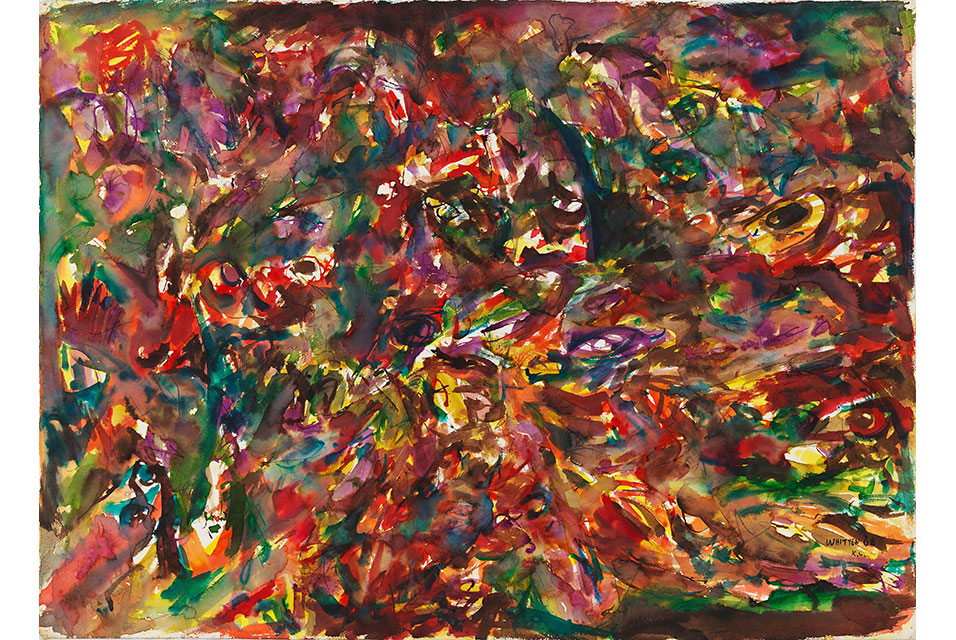First major survey of Jack Whittens works on paper on view at Hauser & Wirth

Artdaily_NEW YORK, NY.- Hauser & Wirth is presenting the first major survey of Jack Whitten’s works on paper, spanning the artist’s six decade career. Jack Whitten (1939 – 2018) made it his mission to disrupt the discipline of art history through experiments with material, process, and technique. He effectively constructed a bridge between gestural abstraction and process art, constantly working toward a nuanced language of painting that employs deeply personal expression. Whitten was also a prolific and powerful draughtsman. The unique body of works on view at Hauser & Wirth testifies to the immensity of his commitment to drawing as a means to make manifest his ideas and advance his methods.
‘Jack Whitten. Transitional Space. A Drawing Survey.’ spotlights the artist’s playfulness and improvisational skill in searching for his own special visual language. Paper was more than an effective medium for Whitten; for him, working on paper was akin to scientific research. With an aesthetic hypothesis in mind, he worked tirelessly on paper to both subvert and elevate the history of art and how best to represent the many layers of information packed inside his imagination.
Drawing was an integral part of Whitten’s artistic and technical maturation. His analysis of the properties of different mediums engaged materials as diverse as watercolor, toner, cuttlefish ink, homemade walnut ink, and endless variety of Japanese and specialty papers. The trial-and-error of Whitten’s methodology can be felt through the multiple versions and renditions he created of particular works, many of which served as preliminary studies for subsequent paintings and monumental series.
About the Exhibition ‘Jack Whitten. Transitional Space. A Drawing Survey.’ showcases the evolution of Whitten’s drawing process by exploring a range of styles, techniques, and use of varied materials from the 1960s to the late 2010s. The many phases of his practice – which he described as ‘conceptual’ – are united by a passion for technical exploration and a mastery of abstraction’s potential to map geographic, social, spiritual, and psychological locations, often within the African American experience. ‘Drawing is an act of brave exploration into unknown territories,’ Whitten said in his seminal 1993 essay, ‘Working on Paper.’ ‘I investigate everything and anything through the act of drawing.’
Organized chronologically, ‘Transitional Space’ begins with works from the 1960s, a period of self-analysis for Whitten. Drawing from such sources of inspiration as the late Surrealism of Arshile Gorky and the abstraction of Willem de Kooning, as well as his studies of African sculpture, Whitten was driven by an interest in the current political climate of the 1960s and a search for identity. At a time in New York when abstract expressionism was the dominant vocabulary, Whitten worked to find a way through and beyond those notions, and worked to develop his own point of view through this lens. The exhibition features works from 1964 that bring attention to the artist’s early gestural practice. In the group of portraits, which includes ‘Ruby’ (1964) and ‘Viola’ (1964), Whitten depicts African American women which at the time, was a radical subject for art. The Forms series are early experiments with processes and relate to his later Ghost paintings. Grappling with recent events of that time, the King’s Garden series is dedicated to the revered civil rights activist Martin Luther King, Jr. These landscape-based works, still quasi-representational and clearly related to issues of race, comprise a harbinger of the direction Whitten’s practice would take. Toward the end of the Sixties, Whitten began the Transitional Space series, shifting from naturalistic representation into the pure abstraction that would characterize his work in the 1970s.
